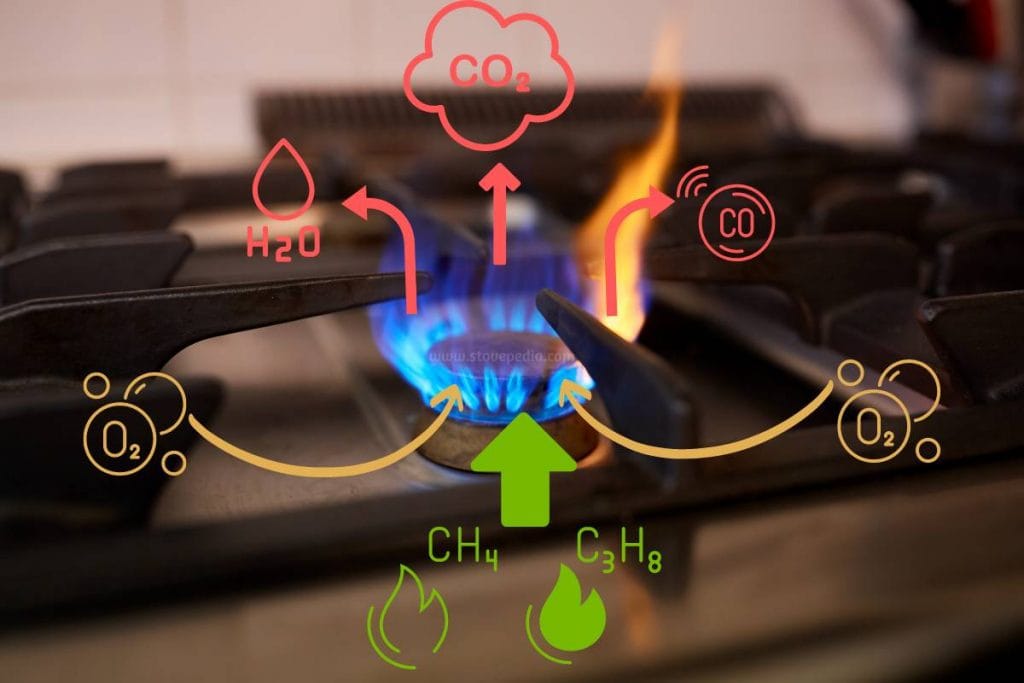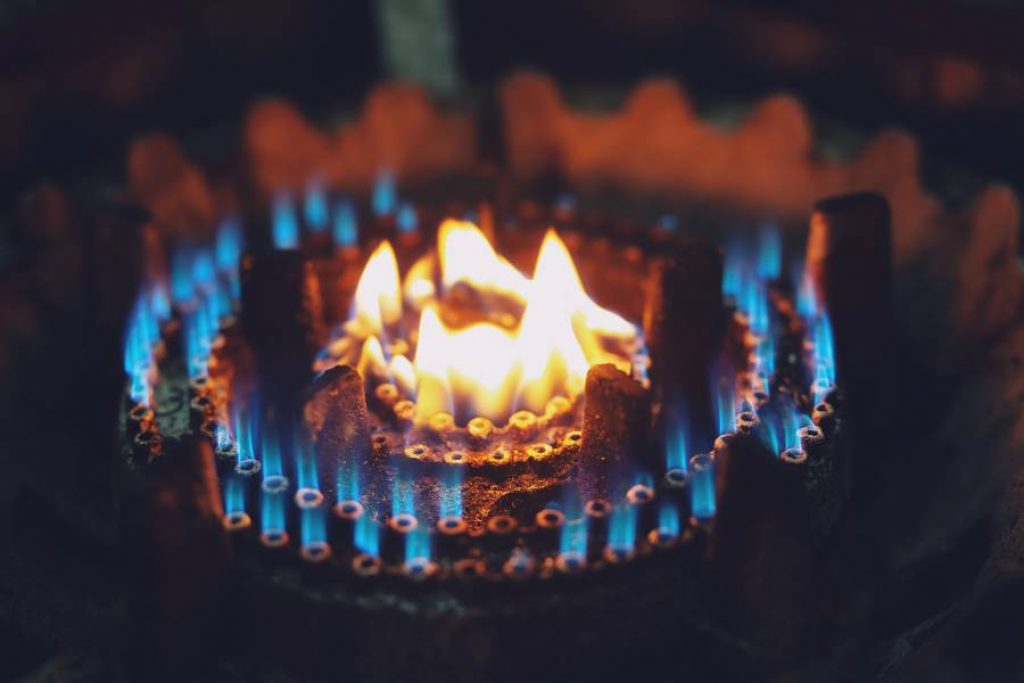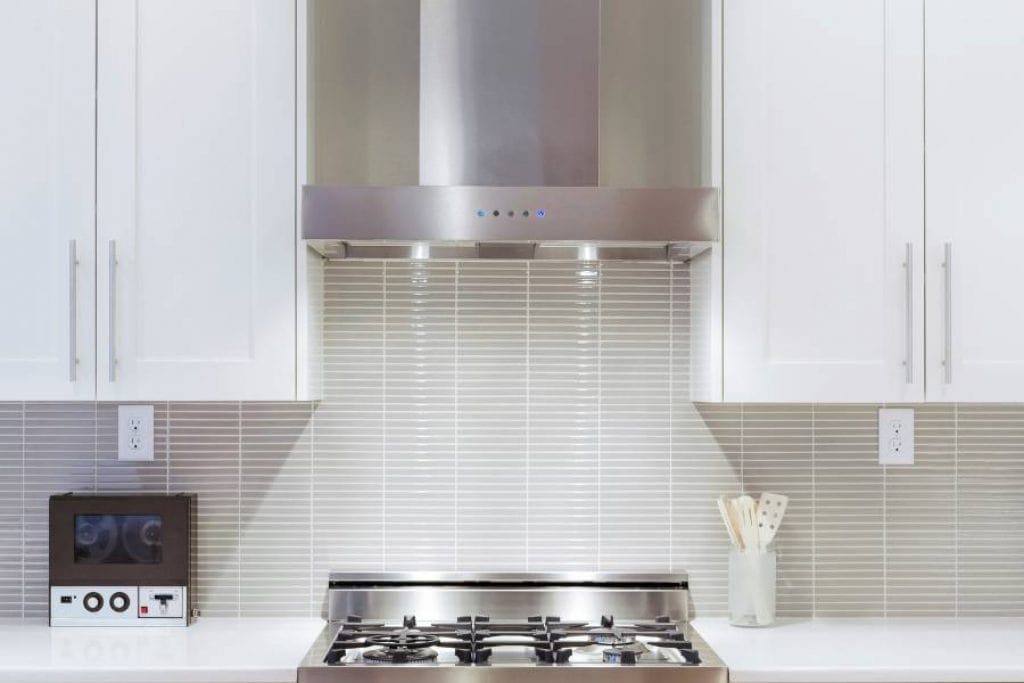If you’re installing a new gas stove in your kitchen, the fear of carbon monoxide poisoning is a valid concern. Like most appliances that burn fuel to operate, gas stoves can release carbon monoxide. As you might be aware, inhaling this gas can lead to a variety of respiratory diseases over time.
Don’t worry, this doesn’t mean a gas stove is unsafe to use. This article will tell you everything you need to know about generation carbon monoxide from a gas stove, its affects and how you can prevent it.
Can A Gas Stove Release Carbon Monoxide?
Before you panic about the fact that gas stoves may release carbon monoxide, please keep in mind that it’s not supposed to happen. When functioning properly, a gas stove only produces heat, carbon dioxide, and water vapor through the combustion process. There’s no carbon monoxide released, and the air is perfectly safe to breathe.
However, the problem occurs when there’s a lack of adequate oxygen in the mixing tubes of your gas stove. Regardless of whether you’re using LPG or PNG stove to cook, the gas needs to be mixed with oxygen before it can burn. In case there isn’t enough oxygen in the system, combustion would be incomplete, and the chemical reaction would be different from that of complete combustion.
The key difference between complete and incomplete combustion of cooking gas is the latter produces carbon monoxide. Hence, while gas stoves usually don’t release carbon monoxide, inadequate oxygen may cause it to happen.

The Chemical Reactions
The chemical reaction for complete combustion of propane is as follows-
C3H8 + 5 O2 → 3 CO2 + 4 H2O + Heat
In simpler words, burning a mixture of propane and oxygen produces water vapor, carbon dioxide, and heat. The amount of heat generated from propane combustion is around 25 MJ/liter or 49 MJ/kg. However, keep in mind that the above equation applies only to complete combustion, which won’t be possible if there isn’t enough oxygen.
In case of incomplete propane combustion, the chemical reaction would be:
2 C3H8 + 9 O2 → 4 CO2 + 2 CO + 8 H2O + Heat
As you can see, alongside the results of complete combustion, incomplete combustion of propane also creates carbon monoxide, a poisonous gas. This is why maintaining an adequate oxygen supply in the mixing tubes of a gas stove is crucial.
Moving on from LPG, let’s now see how it works when using PNG for direct cooking on a gas stove. Remember, the chemical composition of PNG is quite different from LPG as natural gas mostly consists of methane. The chemical reaction of burning methane mixed with oxygen is as follows:
CH4 + 2O2 → CO2 + 2H2O + heat
The ultimate result is still similar to LPG combustion, but the heat generated from burning PNG is relatively much lower.
How To Detect Carbon Monoxide Generated From Gas Stove?
One of the biggest challenges of dealing with high carbon monoxide emissions is that the gas has no taste or odor. You cannot detect the presence of CO simply by breathing in the contaminated air, which means you may unknowingly inhale the gas. However, a few signs indicate high levels of CO emission from the gas stove flame.
1. Flame Color
A change in the flame color of your gas stove is a major indicator that something is wrong with it. A properly functioning gas stove with complete fuel combustion generates blue flames. However, if the flames turn yellow or orange, it indicates incomplete combustion and, in turn, high CO generation. The color change to orange is usually due to the presence of soot particles occurring from the improper combustion process.

2. Soot Generation
As mentioned just above, the flame generated from incomplete combustion of cooking gas contains soot particles. This soot will deposit on the underside of your utensils, which makes them easy to notice. Also, a yellow flame often indicates improper combustion and soot generation.
Hence, if your cookware suddenly starts to blacken after use, there’s a chance that your gas stove is producing high amounts of carbon monoxide.
3. CO Detector
It’s highly recommended to install a carbon monoxide detector in your kitchen for the sake of safety. This important piece of safety equipment constantly tests the air quality and looks for inordinate amounts of carbon monoxide in the air. In case your gas stove starts releasing high amounts of CO, the CO detector will alert you and save you from a case of carbon monoxide poisoning.
4. Ignition Issues
Slow or faulty ignition is another indicator of incomplete combustion. Although there could be other reasons behind it too, ignition issues in a gas stove often originate from the lack of enough oxygen. As mentioned earlier, cooking gas needs to mix with oxygen before combustion. If your gas stove is suddenly taking longer to ignite, you should have it inspected for high CO emissions.
Does Carbon Monoxide From Gas Combustion Affect The User?
Carbon monoxide can be extremely harmful to anyone inhaling the gas. However, before we get to the effects, let’s get an understanding of how carbon monoxide poisons the human body.
When you breathe in high amounts of carbon monoxide, the gas is introduced into your circulatory system and contaminates your blood. The CO molecules bind themselves to the hemoglobin present in the blood. This significantly curtails the blood’s ability to absorb and carry oxygen.
The most common effects of CO exposure are fatigue, headaches, confusion, and dizziness due to inadequate oxygen delivery to the brain.
The California Air Resources Board
How To Minimize Generation Of Carbon Monoxide?
Thankfully, you can easily avoid carbon monoxide poisoning by taking a few simple precautionary steps. The following measures will help you prevent or minimize the adverse effects and detect high CO emissions early on.
Install A Kitchen Chimney
Installing a kitchen chimney over your gas stove would be a smart move. A kitchen chimney will suck out the poisonous gasses from your gas stove, protecting you from potential CO poisoning. Besides this, kitchen chimneys also help keep the kitchen cool and get rid of airborne grease particles.

Keep Your Gas Stove Clean and Well-maintained
As explained earlier, gas stoves release carbon monoxide when there isn’t enough air in the mixing tubes. Simply keeping your gas stove clean and well-maintained and getting it inspected once in a while can help you prevent this altogether.
Install A Carbon Monoxide Alarm
You may install a CO alarm system in your kitchen to detect dangerous levels of carbon monoxide in the air and alert you. This will protect you from suffering carbon monoxide poisoning.
In Conclusion
Wrapping up, we can safely conclude that while carbon monoxide poisoning from a gas stove is possible, it isn’t too common. A gas stove will release high levels of carbon monoxide only when it’s faulty and doesn’t receive adequate air in the mixing tubes. While a properly adjusted gas stove may release CO too, it’s quite a negligible amount and doesn’t exceed the safe levels.
When buying your gas stove, make sure to choose a brand that’s well-known for quality products. This will help avoid manufacturing defects that can result in carbon monoxide poisoning. Install a CO detector and also a chimney in your kitchen, if possible. I hope this article has cleared up all your queries on this matter, and you can now keep your family safe from CO poisoning.


Should the CO detector be installed high or low?
It’s highly recommended to install it 5 feet above the floor.